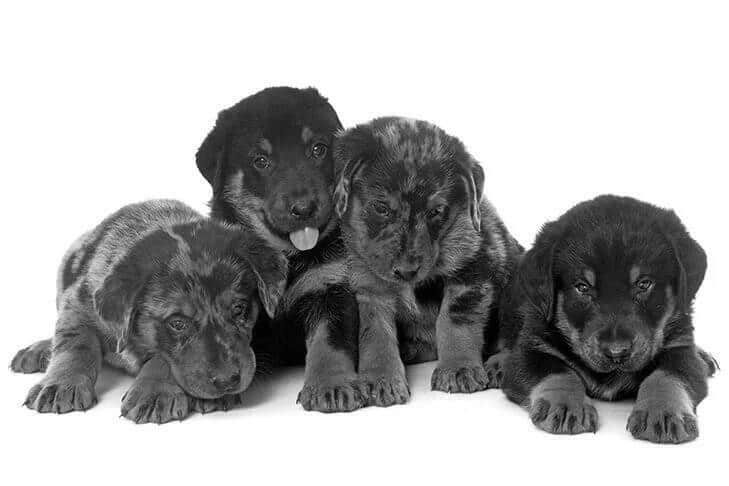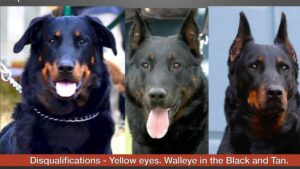
The Beauceron – Expression & Head Characteristics
Discover the fearless Beauceron, a breed with a wolf-like expression, demanding respect through stoic confidence.
Home » Meet The Breeds » Beauceron Dog Breed
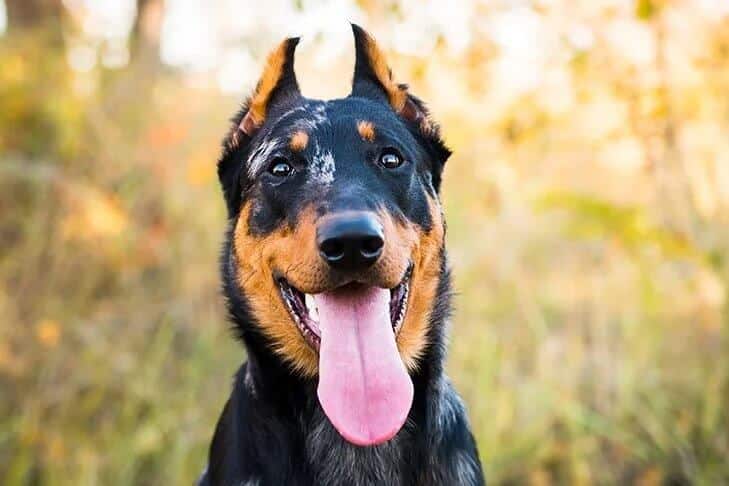
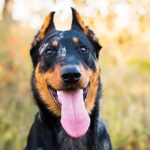
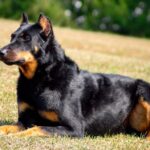
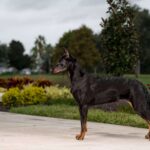
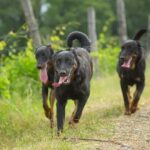
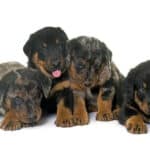
The Beauceron, referred to in France as the Berger de Beauce or Bas Rouge, is a herding breed originating from the plains of Central France. Renowned for its intelligence, loyalty, and work ethic, the Beauceron has served as both a shepherd dog and a guardian for centuries. With its commanding presence and poised demeanor, the breed stands (with its signature rear double dewclaws) as a symbol of French pastoral heritage.
Herding
24 – 27.5 Inches
70 – 110 Pounds
10 – 12 Years
| Country of Origin | France |
|---|---|
| Bred For | Herding, Guarding, Companionship |
| Known For | Frank Expression, Muscular Body, Intelligence, Fearlessness |
| Popularity | Moderate |
| Temperament | Faithful, Self-Assured, Gentle, Fearless |
| Activities | Herding, Hiking, Protection Work, Conformation Shows, Dog Sports |
The Beauceron, often referred to as the Berger de Beauce (Shepherd of Beauce) or Bas Rouge (Red Stockings), has a storied history that stretches back several centuries. The breed hails from the Beauce region of Northern France, which is how it garnered its name.
Historically, the Beauceron was primarily known as a working dog, valued for its formidable herding capabilities and protective instincts. Its primary responsibility was to aid French shepherds and farmers in herding and guarding large flocks of sheep, and sometimes, cattle herds as well. The breed’s intelligence, loyalty, and physical prowess made it an invaluable asset in these roles.
The breed’s documented history can be traced back to the late 16th century. Early illustrations and descriptions of a Beauceron-like dog are present in Renaissance manuscripts. However, it wasn’t until the 19th century that efforts were made to categorize and standardize the breed. In 1863, the Beauceron made its debut at the very first French dog show.
The late 1800s saw the establishment of the first French shepherd dog club, which subsequently led to the distinction between the long-coated Berger de Brie (Briard) and the short-coated Berger de Beauce (Beauceron). The first official Breed Standard for the Beauceron was established in 1897.
Beyond their herding duties, Beaucerons played significant roles during both World Wars. Their intelligence, trainability, and loyalty were harnessed for tasks such as carrying messages, detecting mines, and supporting troops.
In terms of international recognition, the Beauceron was first acknowledged by the Fédération Cynologique Internationale (FCI) and later by The Royal Kennel Club (UK). The American Kennel Club (AKC) officially recognized the Beauceron as a member of the Herding Group in 2007.
Over the years, while the breed’s role as a herder has diminished due to modern farming practices, the Beauceron’s popularity as a family companion, protector, and competitor in various dog sports has risen. The breed’s rich heritage, combined with its modern-day versatility, makes it a cherished part of France’s canine history and a beloved companion to many worldwide.
Adult male Beaucerons typically stand between 25.5 and 27.5 inches at the shoulder, while mature females are slightly shorter, ranging from 24 to 26.5 inches in height.
The weight for adult Beaucerons usually ranges between 70 and 110 pounds, with females often slightly lighter in comparison to their male counterparts.

The Beauceron presents itself with a well-proportioned physique. The length of the body, measured from the point of the shoulder to the point of the buttock, is slightly greater than the height at the withers. This gives the Beauceron its slightly rectangular shape. In terms of substance, the breed possesses solid bone structure without appearing coarse or heavy. The overall appearance showcases both power and agility, hallmarks of the breed’s herding and protective roles.
Texture: The Beauceron’s coat is short and dense, offering good protection against the elements. It is double-coated, with a fine, soft undercoat covered by a rough, straight outer coat. These qualities make the breed well-suited for outdoor work.
| Standard Color | |
|---|---|
| Black & Tan | ee |
| Gray Black & Tan | ee |
| Black & Rust | ee |
| Harlequin | ee |
Markings: In Harlequin Beauceron, the black and tan base includes a pattern of blue-gray patches that are evenly distributed over the body.
A Note About Color: All Beauceron must have either black and tan or Harlequin markings. A Harlequin Beauceron may present a predominance of black among the blue-gray patches, but the head must not be entirely gray. Too much gray, or black on one side of the dog and gray on the other, are unacceptable. A white spot on the chest, no bigger than one inch in diameter, is acceptable but is not desired.
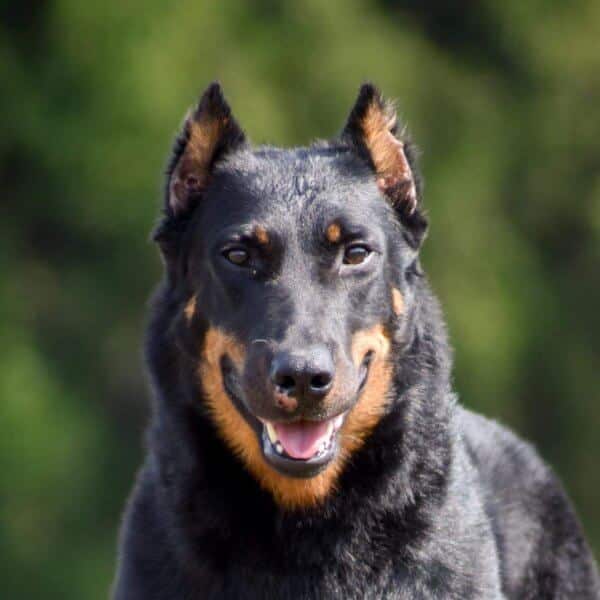
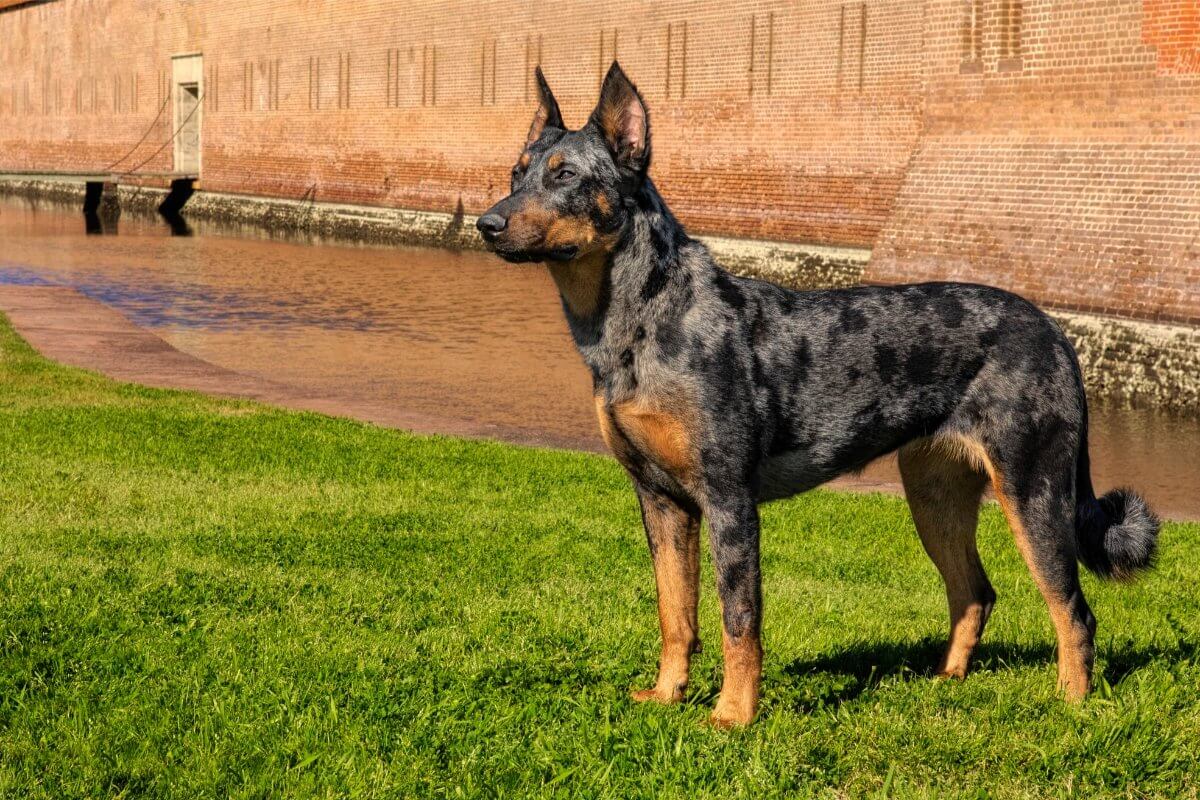
The Beauceron’s tail serves as a notable breed feature, adding to its balanced and harmonious silhouette. It is set and attached high, reaching down to the hock joint or even below it when the dog is at rest. In motion, the Beauceron may raise its tail slightly, but the tail should never curl over the back or deviate significantly from its natural downward position.
The tail is strong at the base, tapering gradually to the tip where it features a slight “J” shape without deviating to the left or to the right.
Historically, some Beaucerons have had their tails docked, but this practice is uncommon and is banned or restricted in many countries. A natural, full-length tail is now commonly seen in the show ring and in the pasture.
The tail of the Beauceron is usually adorned with a slight brush, and on its underside, it showcases a slight feathering that emphasizes the breed’s rustic elegance.
The decision to own a Beauceron is not one to be taken lightly. While this dog is incredibly loyal and intelligent, the breed does come with specific requirements for ensuring its well-being and for maintaining a harmonious living and working environment.
The Beauceron, like all dog breeds and mixed breeds, can experience specific health concerns which prospective owners should be aware of. While generally robust and healthy, due diligence is necessary to ensure the well-being of any dog. Regular veterinary check-ups, an appropriate diet, routine exercise, and an understanding of the potential health risks are all essential.
Lifespan: A healthy Beauceron typically has a lifespan of 10 to 12 years. This range can vary based on various factors, including genetics, diet, and overall care.
The Beauceron, although generally a healthy and sturdy breed, can be predisposed to some breed-specific health issues. Here are several conditions that have been identified in the breed:
Regular veterinary visits and screening tests of the Beauceron can help to detect or prevent some of these issues early on. It’s also essential to be aware of any signs or symptoms that a dog may be exhibiting before a risky symptom becomes a genuine problem.
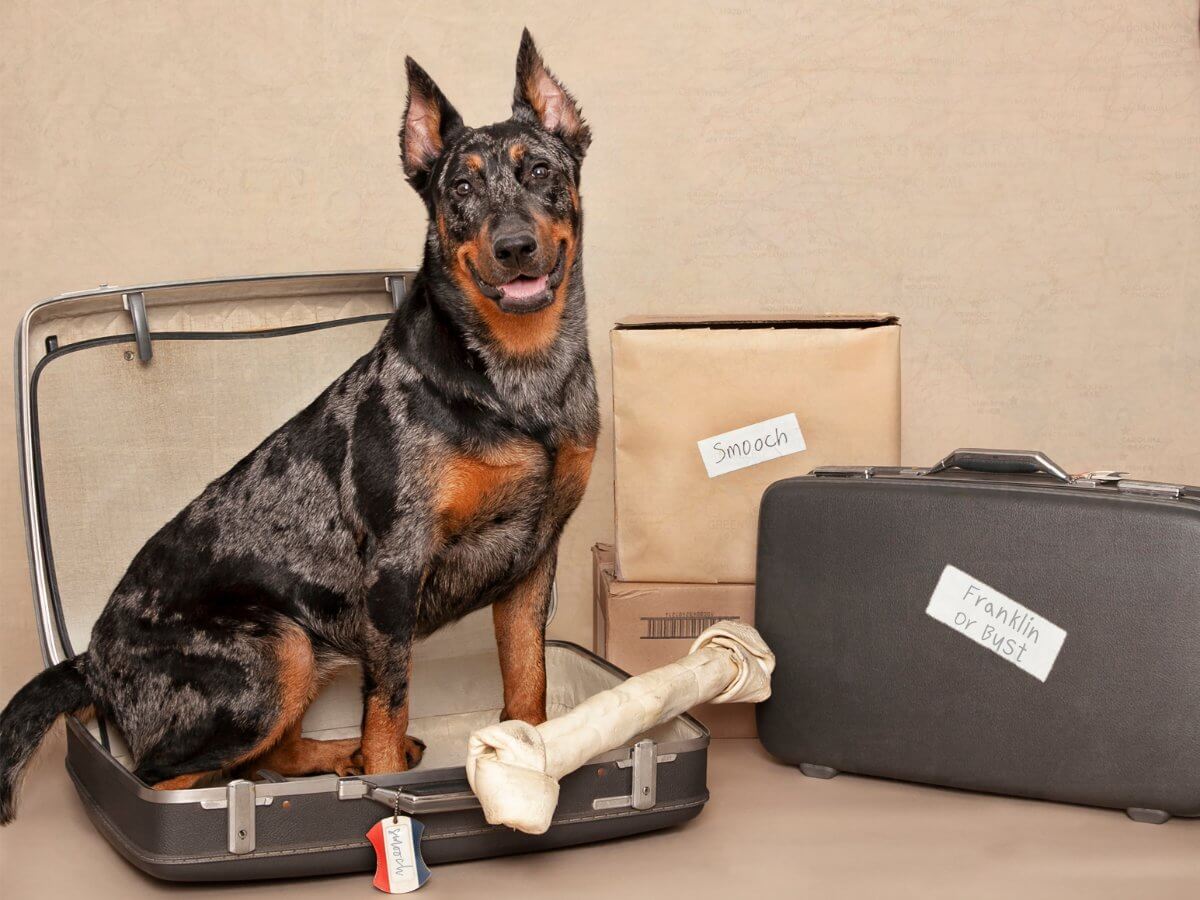
The Beauceron’s personality is a beautiful blend of intelligence, loyalty, and courage, deeply rooted in its herding lineage. This equips the breed with a high drive and keen instincts, and makes this dog both an astute observer and a quick thinker.
For novice dog owners, a Beauceron might present a challenge. While these dogs are undeniably eager to please, their combination of intelligence and strong-willed nature calls for an owner ready to provide clear guidance with consistent and patient training. This breed also possesses an underlying sensitivity that might escape the casual observer’s notice. Forming deep bonds with their families, Beaucerons respond best to positive reinforcement and may exhibit signs of stubbornness or discontent if treated harshly.
Being herding dogs, Beaucerons have an inherent need to be with their “pack.” Long spells of solitude can make them feel isolated, sometimes leading to boredom-induced destructive behaviors. Socialization is key for this breed. When introduced to others at a young age, they can coexist harmoniously with other dogs. But it’s worth noting that their herding tendencies might sometimes prompt them to “herd” other household pets. Furthermore, their assertive nature could manifest in dominant behavior, particularly towards dogs of the same gender.
Families with children can find a gentle giant in the Beauceron. Raised alongside kids, they are typically protective and kind, but their size and spirited energy advise supervision during playtimes, especially with younger children. Strangers might find the Beauceron aloof at first, and the breed’s inherent caution around unfamiliar faces makes it a vigilant watchdog. Still, a well-trained and socialized Beauceron can quickly gauge the difference between a potential threat and a benign visitor, adapting its behavior accordingly.
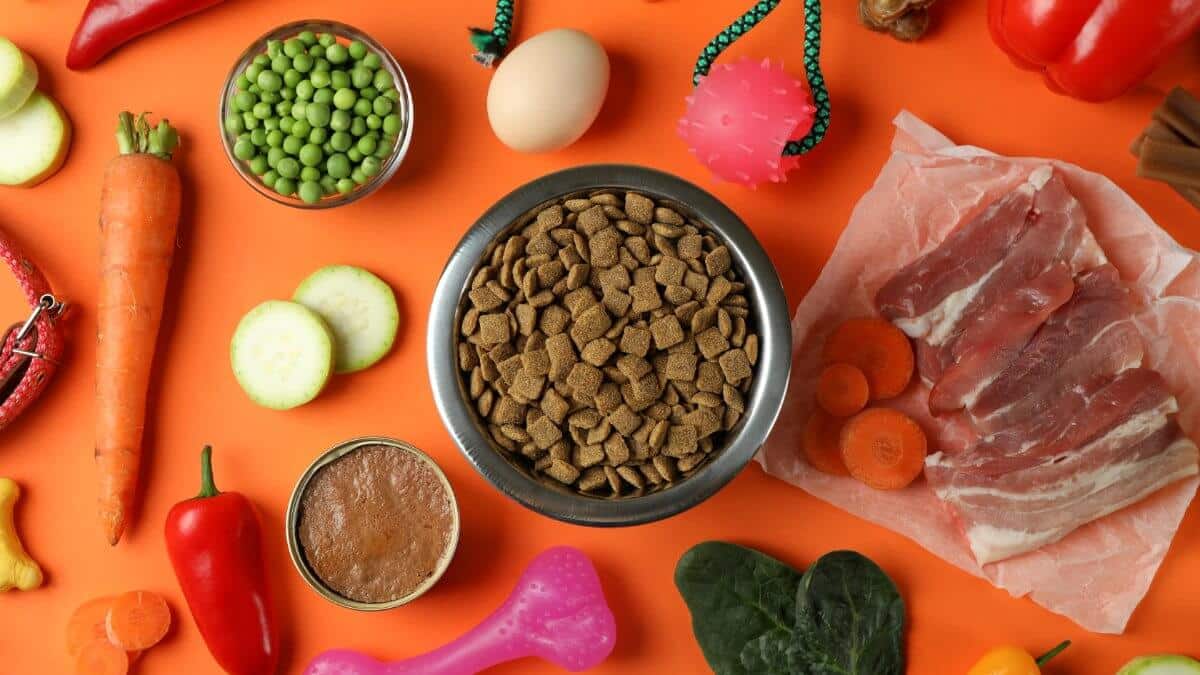
Feeding a Beauceron correctly is pivotal not only to its health but also to its behavior and overall well-being. Being a large and active breed, the Beauceron has specific dietary requirements that change over the dog’s lifespan.
For Beauceron puppies, it’s essential to provide a balanced diet that supports their rapid growth phase. Puppies have unique nutritional needs, and their food should be rich in protein and healthy fats to support muscle development and energy. However, it’s equally important not to overfeed, as rapid growth can lead to skeletal issues in large breeds.
As the Beauceron transitions into adulthood, the dietary needs shift. An adult Beauceron typically requires a diet that’s protein-rich with moderate fat content. This supports the dog’s active nature and maintains muscle mass without promoting unnecessary weight gain. The amount of food a Beauceron requires can vary based on activity level, age, and metabolism. On average, an adult Beauceron might consume between 3 to 4 cups of high-quality dry dog food daily, divided into two meals.
Adjustments to the Beauceron’s diet might be necessary based on its activity. For instance, a highly active Beauceron might need more calories, while a more sedentary one might need fewer to prevent weight gain.
Consistency is vital when it comes to feeding routines. Regular feeding times, coupled with monitoring the dog’s weight and adjusting food quantities as necessary, will ensure the Beauceron remains healthy and energetic throughout its life.
Remember, the quality of dog food is essential. It is critical to ensure that the primary ingredients are wholesome. Avoid foods with fillers, artificial preservatives, and colorings. Also, consulting with a veterinarian can provide guidance on the best dietary choices for individual Beaucerons.
The Beauceron’s legacy as a herding and guard dog showcases its intelligence, agility, and steadfast nature. As a result, training this breed is both a rewarding and challenging experience. These dogs are quick learners, absorbing commands and instructions with impressive speed. However, their strong-willed disposition means that training must be approached with consistency, clarity, and a lot of patience.
Training a Beauceron is not just about teaching basic commands but is also about channeling the dog’s high energy and innate instincts in the right direction. Given their herding background, Beaucerons may exhibit behaviors like nipping at heels or trying to “herd” moving objects or people. Early socialization and obedience training can help in curbing such tendencies and ensuring any dog will interact well with other animals and humans.
While they are eager to please their owners, Beaucerons can sometimes be independent thinkers, making it essential to establish leadership early on. Positive reinforcement methods work best with this breed, as they respond well to praise, treats, and play.
The Beauceron’s acute sense of hearing and natural protective instincts may also lead it to be alert and sometimes vocal when it detects unfamiliar noises or notices strangers. Training can help to manage this behavior, ensuring the dog is vigilant without being overly aggressive or excessively barky.
One should also be wary of the Beauceron’s potential for wanderlust. While they are generally loyal and stick close to their owners, an exciting scent or a moving object might tempt this dog to give chase. Ensuring the Beauceron has a secure environment to play in and instilling a strong recall command can help to manage this trait.
Incorporating activities that challenge both the Beauceron’s mind and body will aid in a holistic training experience. Puzzle toys, agility training, and advanced obedience exercises can keep a Beauceron engaged and mentally stimulated.
For a breed as dynamic and spirited as the Beauceron, exercise is not just a routine—it’s an essential component of daily life. This breed comes with a natural abundance of energy, stemming from its historical role as a diligent herder and protector.
| Energy Level | Moderate to High |
|---|---|
| Exercise Requirements | 3 Hours/Day (Minimum), Daily Walks, Vigorous Running, Regular Exercise, Playing with Another Dog, Mental Stimulation |
A Beauceron is not content with a mere stroll around the block. These dogs thrive on rigorous physical activity and mental stimulation. Regular, vigorous exercise helps them channel their energy positively, keeping them both physically fit and mentally sharp. Without adequate exercise, a Beauceron can become restless and may exhibit undesirable behaviors due to pent-up energy.
While their energy level is notably high, the Beauceron’s exercise needs aren’t just about intensity. These dogs also seek variety. A mix of activities, from brisk walks to play sessions in a secure yard, fetch games, and even agility drills, can be a great way to keep them engaged and satisfied.
Though playful, the Beauceron also appreciates structured activities that mimic tasks. Herding Trials, Obedience Trials, or even tasks like fetching specific items can be especially rewarding for them, given their working dog lineage.
Despite their energy levels, it’s also important to remember that, like all dogs, Beaucerons need downtime to rest and recover. After a day of activity, they’ll appreciate a comfortable spot to relax and recharge.
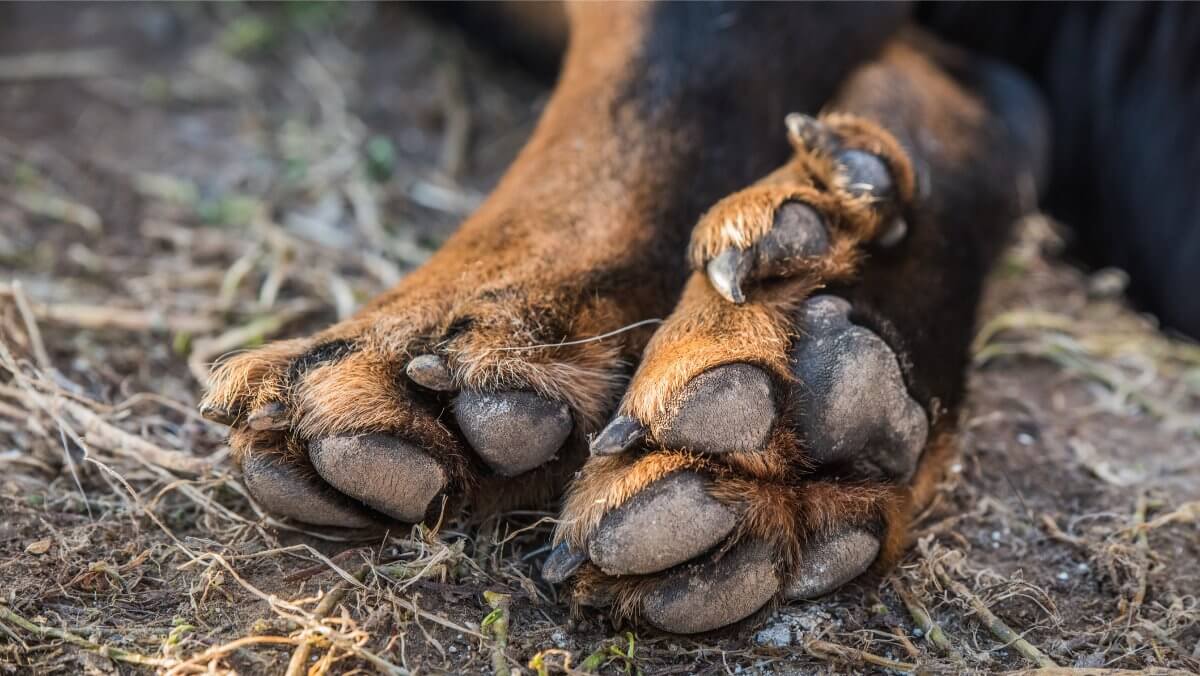
Grooming the Beauceron is a relatively straightforward process, but it is important for maintaining the health and appearance of the coat and the dog’s overall well-being.
| Coat Type | Coarse, Dense, Lying Close to Body |
|---|---|
| Grooming Requirements | Weekly Brushing, Occasional Bathing, Routine Ear Cleaning, Periodic Nail Trimming, Regular Tooth Brushing |
The Beauceron boasts a dense, short coat that lies close to the body. This type of coat benefits from regular brushing, ideally once or twice a week, to remove loose hairs and reduce the amount of shedding. Brushing not only helps in managing their shedding but also distributes natural oils, keeping the coat glossy and healthy.
While the Beauceron isn’t known to shed excessively, the breed does have periods, typically during the changing of seasons, where it will undergo a heavier molt. During these times, more frequent brushing may be beneficial to help with managing the increased coat loss.
Bathing a Beauceron doesn’t need to be a frequent affair. Given their coat’s natural ability to repel dirt, this breed requires a bath only when the dog gets particularly dirty. Overbathing can strip the coat of its natural oils, so it’s best to use a mild dog-specific shampoo when a bath is needed.
Other aspects of grooming include regular cleaning of the Beauceron’s ears, as this breed can be prone to ear infections. Nails should be trimmed regularly to prevent overgrowth and splitting, and regular dental care, including tooth brushing and the use of dental chews, can help in maintaining good oral health.
Adapting one’s life to accommodate a Beauceron can be an enriching experience, but it does come with specific considerations given the breed’s unique traits and needs.
First and foremost, the Beauceron’s size and energy level make the breed more suited for homes with ample space. While it’s not impossible for this dog to live in an apartment, it would demand extra effort from the owner to ensure it gets adequate exercise. Ideally, a house with a spacious, securely fenced yard would be perfect for this breed to roam and play.
In terms of weather adaptability, the Beauceron’s dense coat offers a good level of protection in colder climates. The breed can tolerate cold weather fairly well, though, like all dogs, individuals should not be left outside in extreme conditions. Conversely, in hot weather, it’s crucial to ensure the Beauceron has plenty of shade and fresh water, and exercise should be limited during peak hours of high temperatures to prevent overheating.
Socially, Beaucerons form strong bonds with their families and tend to be protective, which makes them excellent watchdogs. However, this protective instinct means they can be wary of strangers. Proper socialization from an early age can help to ensure they are well-adjusted and can differentiate between genuine threats and harmless visitors.
Living with a Beauceron also means embracing the breed’s intelligence and work ethic. These dogs thrive when given tasks or challenges, be it in the form of training, games, or even simple household chores like fetching the newspaper.
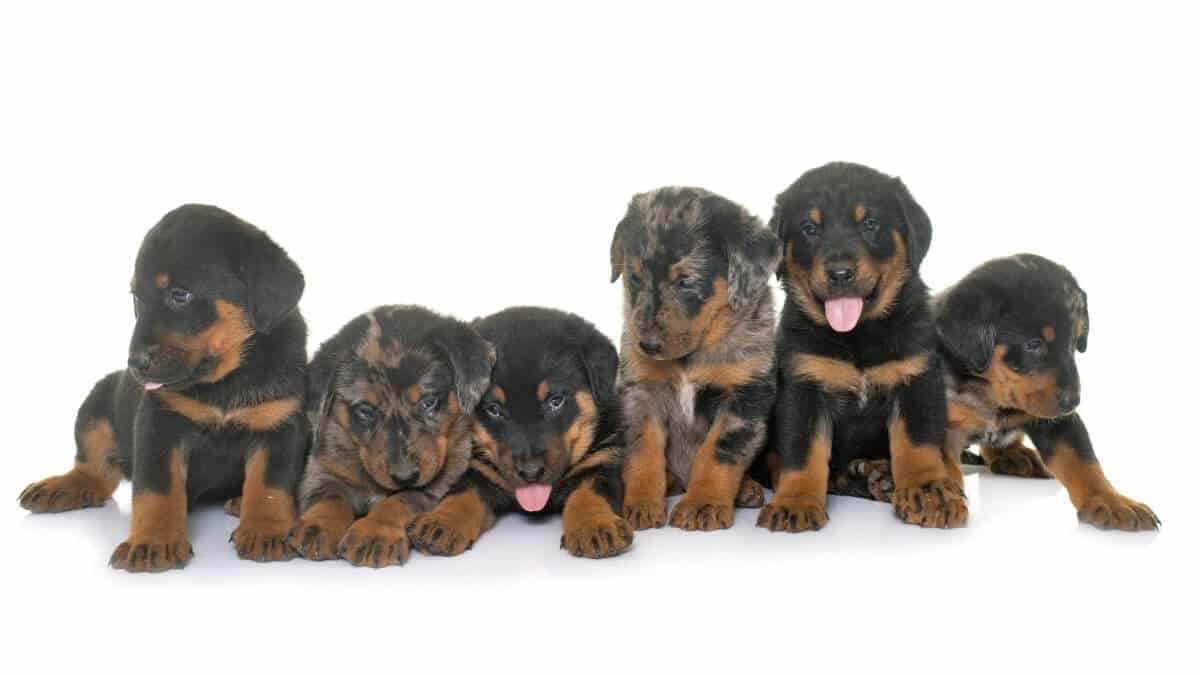
The early days of a Beauceron puppy are filled with boundless energy, playful antics, and a unique curiosity to explore the world around them. These puppies, while undeniably adorable, come with a set of responsibilities that are crucial for encouraging them to grow into well-adjusted, healthy adults.
Caring for a Beauceron puppy begins with ensuring they have a safe and comfortable environment. As they are naturally curious and prone to mischief, it’s essential to puppy-proof the home, removing potential hazards and ensuring they have a designated space of their own.
Nutrition is pivotal during these formative months. A high-quality puppy food that meets the specific nutritional needs of large breeds is vital to support their rapid growth. Regular vet check-ups are equally important to monitor their development and to initiate a vaccination schedule.
Socialization is a cornerstone of Beauceron puppy care. Introducing puppies to various people, pets, sounds, and experiences during their early months will play a crucial role in shaping their temperament and behavior as adults. Positive experiences with different stimuli can help to reduce the chances of them developing fearful or aggressive tendencies later in life.
Training should commence at an early age. While they are eager learners, Beauceron puppies can be a handful owing to their energetic nature and occasional stubborn streak. Consistent, positive reinforcement-based training methods work best. Puppy training classes can also be beneficial, not just for basic obedience but also for the socialization aspect.
Physical activity is a significant part of a Beauceron puppy’s routine. However, while they may seem endlessly energetic, it’s crucial to strike a balance. Over-exercising a puppy can strain its developing joints, so play sessions should be kept short and sweet.
Finally, nurturing a bond of trust and affection with a Beauceron puppy is paramount. Spending quality time, being patient, and understanding the little one’s needs will lay the foundation for a lifelong companionship filled with mutual respect and love.
The Beauceron’s rich heritage as a working dog means that they have an innate desire for performing tasks and meeting challenges. This makes the breed particularly well-suited to a variety of activities and dog sports. Engaging a Beauceron in such endeavors not only keeps the dog physically fit, it also stimulates the dog mentally, allowing it to showcase its innate intelligence, agility, and trainability.
Engaging Beaucerons in dog sports and doggy activities not only provides them with an outlet for their energy and intelligence, it also strengthens the bond between dog and owner. Whether competing at a high level or simply enjoying recreational pastimes together, a rewarding experience is assured for both Beaucerons and their handlers.
The Beauceron is recognized by the world’s leading registries and kennel organizations, which categorize the breed into a specific Group based on its unique characteristics. This breed is recognized worldwide under the following Group designations:
| Organization | Group Designation |
|---|---|
| AKC (American Kennel Club) | Herding |
| UKC (United Kennel Club) | Herding Dog |
| CKC (Canadian Kennel Club) | Herding |
| ANKC (Australian National Kennel Council) | Working |
| RKC (The Royal Kennel Club) | Pastoral |
| FCI (Fédération Cynologique Internationale) | Group 1: Sheepdogs and Cattledogs Section 1: Sheepdogs |
The ideal Beauceron is described by a Breed Standard that is approved by each of the world’s leading registries and kennel organizations. The Breed Standards for this breed may be found in the following links:
| Organization | Breed Standard |
|---|---|
| American Kennel Club | AKC Beauceron Breed Standard |
| United Kennel Club | UKC Beauceron Breed Standard |
| Canadian Kennel Club | CKC Beauceron Breed Standard |
| Australian National Kennel Council | ANKC Beauceron Breed Standard |
| The Royal Kennel Club | RKC Beauceron Breed Standard |
| Fédération Cynologique Internationale | FCI Beauceron Breed Standard |
Breed clubs play a vital role in the promotion, preservation, and betterment of individual dog breeds. These clubs offer a wealth of knowledge and resources for both experienced and novice Beauceron enthusiasts. They organize events, offer training resources, and are often involved in breed-specific rescue efforts.
In the United States, the Beauceron Club of America (BCA) stands as the primary organization dedicated to the breed. This club is recognized by the American Kennel Club and has been instrumental in promoting the Beauceron across the country. Through events, educational resources, and advocacy, the BCA ensures the breed’s Standard and its well-being are upheld.
In Canada, the Canadian Beauceron Club serves as the main hub for all things related to the breed. The club is committed to the breed’s promotion and protection in Canada.
In the United Kingdom, the Beauceron Club UK, founded in 2009, stands as the primary organization dedicated to this breed. Recognized by The Royal Kennel Club, the Beauceron Club UK works diligently to uphold the Breed Standard, provide educational resources, and facilitate events and shows.
Membership in these breed clubs often provides numerous benefits, including access to breed-specific information, participation in club-sponsored events, and networking opportunities with other Beauceron enthusiasts.
Rescue groups and organizations are vital in ensuring that all dogs, including Beaucerons, can find the loving and suitable home they deserve. These groups primarily focus on dogs that have been abandoned, mistreated, or otherwise require assistance, ensuring they receive care, rehabilitation, and ultimately, a loving home.
In the United States, the Beauceron Club of America (BCA) often plays a significant role in rescue efforts. The BCA not only works to promote and uphold the Breed Standard, it also has volunteers who are committed to rescuing, rehabilitating, and rehoming any Beauceron in need.
In Canada, various dog rescues and local shelters might occasionally have a Beauceron available for adoption. Those interested in adopting or assisting Beaucerons in Canada are encouraged to reach out to local shelters or national organizations that cater to herding breeds.
Beaucerons are known to be loyal, protective, and versatile, which can make them good family dogs for experienced dog owners. However, they require consistent training, early socialization, and ample physical and mental exercise. Given the proper environment and care, they can be very affectionate with their families.
Yes, Beaucerons shed. Like many other breeds, they have a double coat which sheds seasonally, usually in the spring and fall. Regular brushing can help to manage the shedding and keep the coat in good condition.
Beaucerons are not inherently aggressive, but they can be assertive and protective. This protective nature can be seen as aggression if not managed properly. Proper training, socialization from a young age, and understanding of the breed’s characteristics are crucial to prevent undesirable behaviors.
No, Beaucerons are not considered hypoallergenic. They shed, and like all dogs, produce dander which can trigger allergies in sensitive individuals. It’s always recommended to spend time with the breed before getting one if allergies are a concern.
Yes, Beaucerons are excellent guard dogs. They have a natural instinct to protect their family and property. Their alertness, intelligence, and loyalty, combined with their physical strength, make them formidable protectors.
Beaucerons can get along well with other dogs, especially if they’re socialized from a young age. However, they might exhibit dominance or herding behaviors, so it’s important to monitor interactions and provide consistent training to ensure harmony with other pets.
Absolutely, Beaucerons are highly intelligent dogs. They are quick learners and can excel in various canine sports and activities. Their intelligence, combined with their work ethic, makes them a joy to train, but it also means they need regular mental stimulation to stay content.
Beaucerons can have cropped ears, done largely for traditional reasons. Historically, cropping prevented injuries while the dogs worked in their dual roles as herder and guardian. However, some countries have banned ear cropping for cosmetic reasons, and in these areas, Beaucerons have their natural ears.

Discover the fearless Beauceron, a breed with a wolf-like expression, demanding respect through stoic confidence.
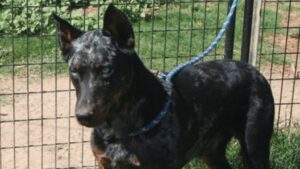
Discover the essentials of judging the Beauceron, emphasizing the breed’s balanced structure, herding capability, and distinct temperament.
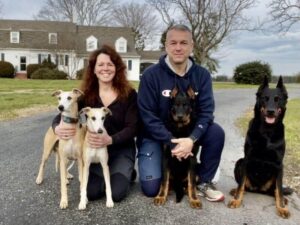
Eric & Joanne Vavassori of Des Monts du Lac, Beauceron breeders, discuss breed challenges, successes, and the dog show community’s future.
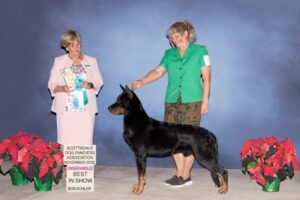
Insights from an Owner Handler, Dawn Johnson. Read about her opinions on various topics about dog handling in the modern show ring.
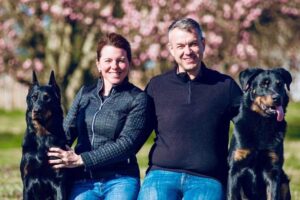
Meet Eric Vavassori: World-renowned Beauceron breeder with 50+ years in dogs, proud mentor, and champion of the breed.
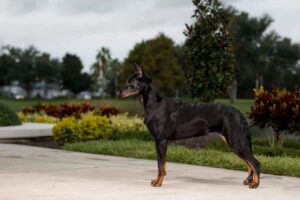
Gain insights from purebred Beauceron experts on challenges, popularity, and characteristics, with perspectives from breeders and handlers.

Discover the fearless Beauceron, a breed with a wolf-like expression, demanding respect through stoic confidence.

Discover the essentials of judging the Beauceron, emphasizing the breed’s balanced structure, herding capability, and distinct temperament.

Eric & Joanne Vavassori of Des Monts du Lac, Beauceron breeders, discuss breed challenges, successes, and the dog show community’s future.

Insights from an Owner Handler, Dawn Johnson. Read about her opinions on various topics about dog handling in the modern show ring.

Meet Eric Vavassori: World-renowned Beauceron breeder with 50+ years in dogs, proud mentor, and champion of the breed.

Gain insights from purebred Beauceron experts on challenges, popularity, and characteristics, with perspectives from breeders and handlers.
The best way to ensure a long and happy relationship with a purebred dog is to purchase one from a responsible breeder. Not sure where to begin?
Contact the National Parent Club’s Breeder Referral Program, which is listed on the AKC Breeder Referral Contacts page.
